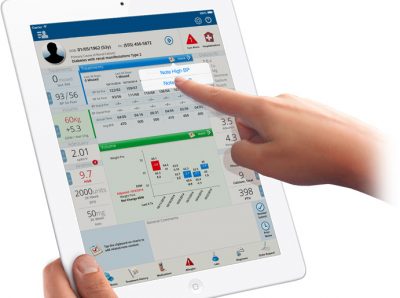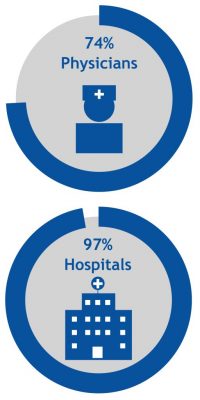EMR Experiences: Reimagining Healthcare
Why Electronic Medical Records

In 2009 the HITECH act was signed into law, mandating that hospitals and physician offices across the U.S. transition from paper-based medical record systems to electronic-based medical record systems (EMRs) and workflows. EMRs provide treatment history, medications, blood pressure readings, and other medical information for patients in a single practice. Unlike paper-based medical record systems, EMRs are able to provide quick access to patient medical information, send important patient alerts, visualize patient medical data for analysis, and much more. EMRs are intrinsic to efficient workflows, accurate tracking, and patient-centered care.
Most hospitals and physicians have found the transition from paper-based to electronic-based medical record systems to be far from easy. A majority of the EMRs available today are not designed with usability in mind, with most physicians finding them difficult to navigate and common tasks time consuming to do. Physicians often end up spending more time interacting with EMRs than with actual patients.

Despite these difficulties, there has been a significant increase in the adoption and meaningful use of electronic-based medical and health record systems by hospitals and physicians. According to a recent Office of the National Coordinator for Health Information Technology (ONC) report, 74% of physicians have adopted a certified EHR system and 97% of hospitals reported that they are in possession of certified EHR technology.
Most EMRs have a long way to go when it comes to accessibility, usability, and interoperability. Physicians often find that they must access multiple EMRs in order to obtain a comprehensive view of a patient’s data and medical history. An effective mobile solution provides physicians easy access to patient data regardless of whether that data is stored in multiple EMRs. An effective mobile solution also makes it possible for physicians to retrieve a 360 degree view of their patients.
Most EMR providers are aware that many healthcare professionals are frustrated with the current state of EMRs and are currently focused on reimagining the EMR experience. Some companies are focused on redesigning the structure of the EMR itself, while other companies are focused on improving EMR navigation and user experience (UX). Some companies are developing mobile EMR applications that include capabilities far beyond basic patient medical record access.
A common complaint voiced by many physicians is the steady stream of patient alerts they receive from EMRs, a problem often referred to as “alert fatigue.” In some cases groups of physicians, hospital physicians in particular, were receiving 150,000 alerts every month from EMRs. A number of EMRs feature the ability to disable these alerts and/or locally customize alerts for different patient populations which allows physicians to effectively manage the problem of alert fatigue.
Capabilities Far Beyond a Redesign
The miVEDiX physician rounding application for example, enhances the accessibility, readability, and usefulness of electronic medical records. iVEDiX focuses on the “push and pull” of patient information so that physicians can quickly and easily access the patient information they need. The application can be layered on top of multiple data sources and features an intuitive UI where patient information is always one or two taps away. The miVEDiX physician rounding application makes it possible for physicians to obtain a unified view of patients without the need to log into multiple systems and EMRs.
The miVEDiX physician rounding application also includes sophisticated, interactive visualization capabilities that provide deep insights into patient health and quality of life. The ability to easily access medical data and gain valuable insights about patients via interactive visualizations helps hospitals and physician offices improve overall workflow and operational efficiency. These improvements allow physicians to gain additional face-to-face time with patients improving their overall quality of life.
Join the Conversation
iVEDiX’s Ameet Bhattacharya will be discussing at this month’s Health 2.0 conference, how innovative technologies and mobile applications can be used to improve the EMR experience. The demonstration is part of the “Reimagining the EMR Experience” panel that will take place at the Santa Clara Convention Center (Ballroom B) on Wednesday, September 28 at 11:45AM PT.




